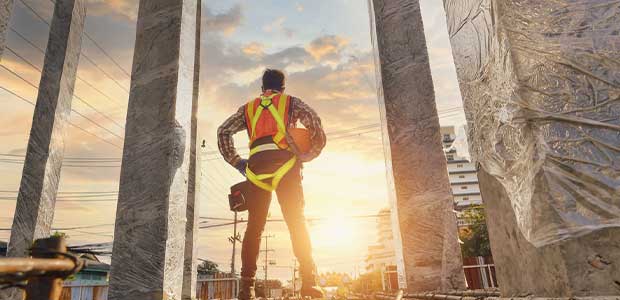
SPONSORED
The Fundamentals of Fall Protection for Workers at the Edge
For many industrial employees, working at height is a regular part of the job.
- By Omar Vikin
- Sep 01, 2022
A worker can experience a fall in the blink of an eye, caused by a momentary lapse in concentration, misplaced footing, reaction to an unexpectedly loud noise, slipping or simply loss of balance. Falls are the second leading cause of workplace fatalities. But they don’t have to be. There is a lot that can be done to prevent falls, and it all comes down to understanding the fundamentals of fall protection.
While there has been progress in recent years, falls from height remain a common cause of injury and death in industries such as oil and gas, construction, civil engineering, maintenance, scaffolding and utilities. Examples of when a worker may experience a fall include construction workers moving around a flat roof or a scaffolder putting platforms in place on the side of a building. No matter the environment, the safety of workers at height depends upon a process of rigorous risk assessments and detailed planning, followed by the application of best practice techniques and, of course, sourcing and using PPE that complies with the necessary standards.
Conducting a Comprehensive Fall Risk Assessment
All projects require planning, and planning for jobs that may require work from heights must begin with a risk assessment. At the outset of a project, the first step to mitigate risks is to identify foreseeable hazards and help to eliminate them. After all, the most effective remedy is avoiding work near edges wherever possible. However, for many jobs, this is unavoidable. In these instances, control measures need to be implemented and regularly reviewed to maintain a healthy and safe work environment.
Identifying fall hazards requires locating all places and tasks where falls might occur. Spaces that typically need extra attention include:
- Structures being constructed or installed, demolished or dismantled, inspected, repaired or cleaned
- Fragile surfaces such as rusty metal roofs and skylights
- Potentially unstable surfaces
- Elevated work platforms or portable ladders
- Sloping or slippery surfaces such as glazed tiles
- Unprotected open edges
- Holes or pits
Inspecting the workplace also means talking to workers and technical specialists to check various aspects such as the design, layout and ultimately, stability of these structures and their load bearing capacity. The proximity and number of workers that work in unsafe areas and the quality of lighting are also aspects that should be considered.
This article originally appeared in the September 1, 2022 issue of Occupational Health & Safety.